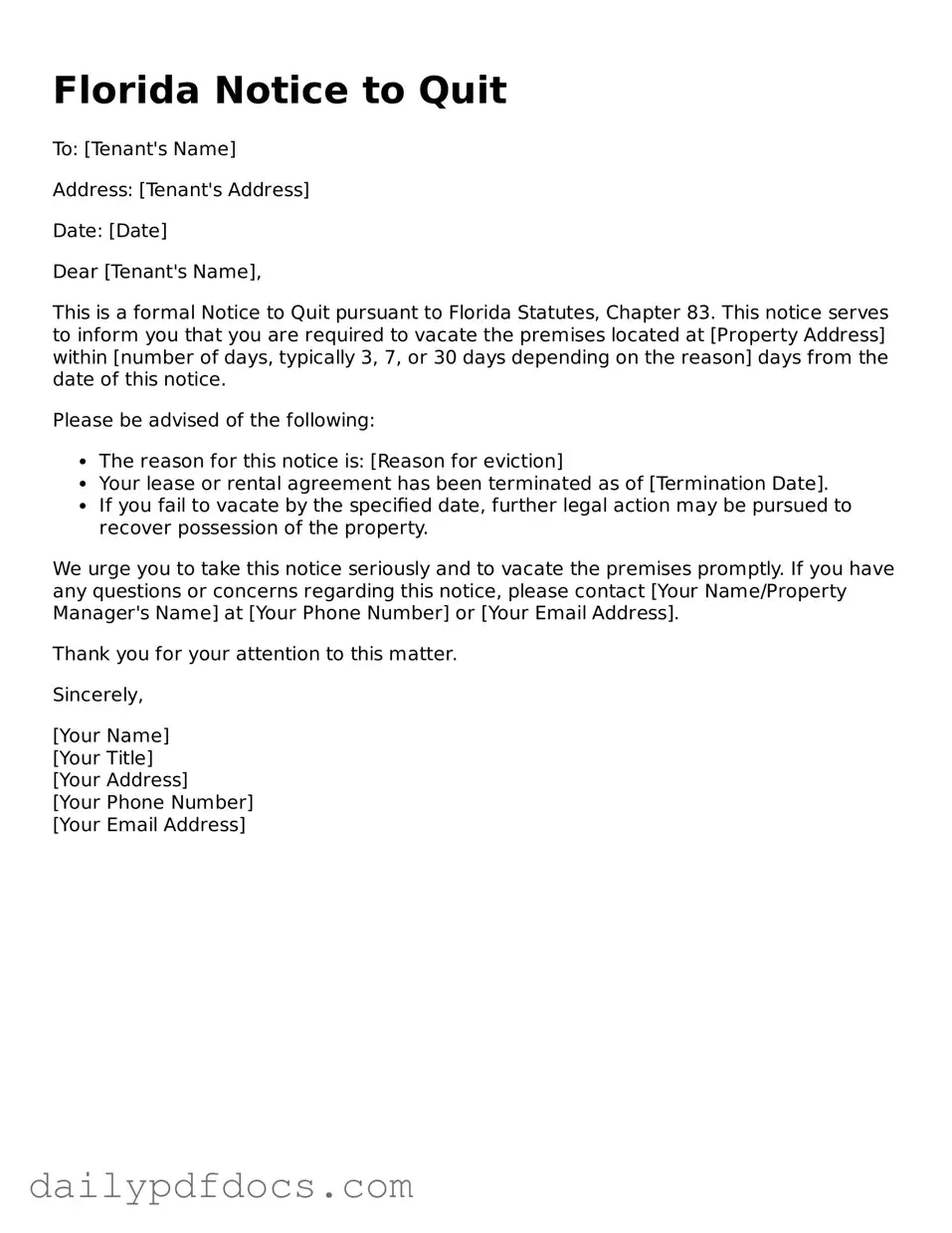What is a Florida Notice to Quit form?
The Florida Notice to Quit form is a legal document used by landlords to inform tenants that they must vacate the rental property. This notice typically precedes any formal eviction proceedings and serves as a written warning to the tenant regarding their lease violations or failure to pay rent.
When should a landlord issue a Notice to Quit?
A landlord should issue a Notice to Quit when a tenant has violated the terms of the lease agreement, such as failing to pay rent or engaging in illegal activities on the property. Additionally, it may be used when a tenant is causing significant damage or disturbances. The notice gives the tenant a chance to rectify the situation or vacate the premises before further legal action is taken.
How long does a tenant have to respond to a Notice to Quit?
The time frame for a tenant to respond to a Notice to Quit varies depending on the reason for the notice. For non-payment of rent, tenants typically have three days to pay the overdue rent or vacate the property. For lease violations, the tenant may have seven days to correct the issue or leave. It is crucial for tenants to review the notice carefully for specific timelines.
Is a Notice to Quit the same as an eviction notice?
No, a Notice to Quit is not the same as an eviction notice. The Notice to Quit is a preliminary step that informs the tenant of the need to vacate the property. An eviction notice, on the other hand, is issued after the Notice to Quit period has expired without resolution. The eviction process involves court proceedings to formally remove the tenant from the property.
What information should be included in a Notice to Quit?
A Notice to Quit should include several key details: the date of the notice, the tenant's name and address, the reason for the notice, the specific lease violation or issue, and the deadline by which the tenant must respond. It is essential for the notice to be clear and concise to avoid confusion.
Can a tenant contest a Notice to Quit?
Yes, a tenant can contest a Notice to Quit. If a tenant believes the notice is unjust or the claims made by the landlord are inaccurate, they can respond in writing or seek legal advice. This may involve negotiating with the landlord or preparing for a potential court hearing if the situation escalates to eviction proceedings.
What happens if a tenant does not comply with a Notice to Quit?
If a tenant does not comply with a Notice to Quit, the landlord may proceed with filing an eviction lawsuit. This legal action can lead to a court hearing where both parties present their cases. If the court rules in favor of the landlord, a judgment will be issued, allowing for the tenant's removal from the property.
Is it necessary to have the Notice to Quit served by a process server?
While it is not strictly necessary to have the Notice to Quit served by a process server, it is advisable. Proper service ensures that the tenant receives the notice and provides a record that can be used in court if necessary. Landlords can also deliver the notice in person or via certified mail, but they should keep proof of delivery.
Can a tenant ask for more time after receiving a Notice to Quit?
A tenant can request additional time to vacate the property after receiving a Notice to Quit, but it is ultimately up to the landlord's discretion. If the landlord agrees, it is best to document any new arrangements in writing to avoid misunderstandings. However, if the landlord refuses, the tenant must comply with the original notice timeline.
